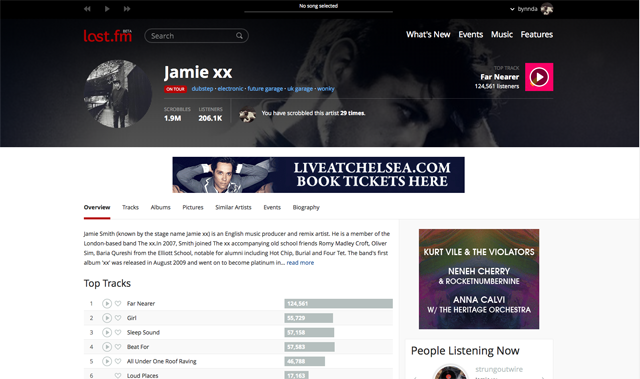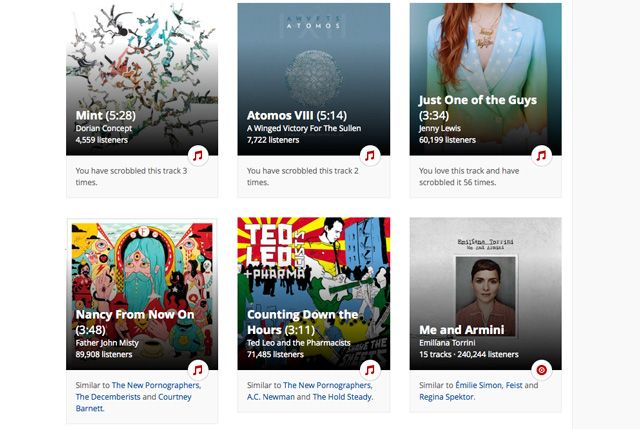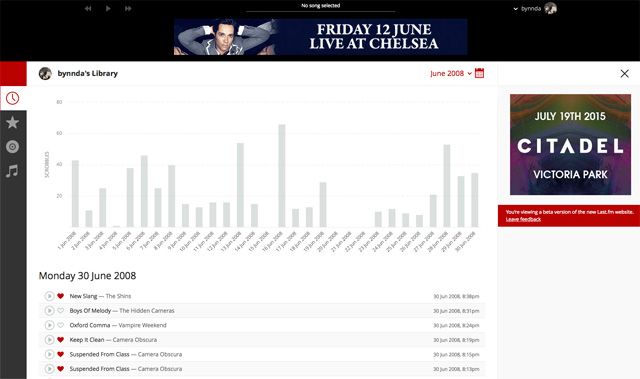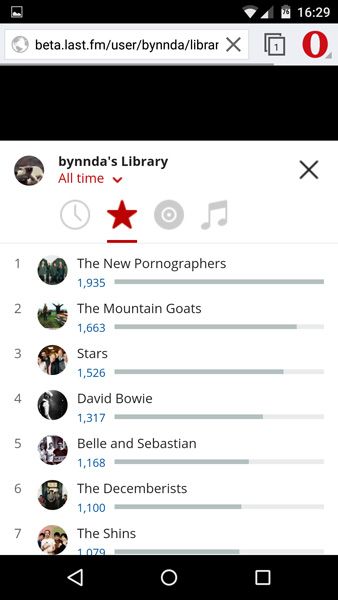Do you remember Last.fm?
The service launched back in 2002 as an online music database, recommendation service, and music-focused social network. Along the way it amassed some 30 million users, before quietly slipping out of the public consciousness.
It seemed likely that the next we’d hear about Last.fm would be when it was being acquired and then shuttered by Google, Apple, or Spotify. But no, Last.fm is back.
With a new redesign now available as an open beta, Last.fm is heading out on its own comeback tour. We have taken another look at the service in order to help you decide whether it’s worth revisiting Last.fm.
Scrobbling Your Songs
One of the reasons Last.fm struggled is that it always tended to spread itself too thinly. It was a little bit Facebook, a little bit Pandora, a little bit Bandcamp, even a little bit MySpace. Yet it never effectively competed with any of these.
Last.fm never took off as a social network. The "Radio" feature was deprecated, and rendered virtually obsolete by the new crop of streaming services. The "Artists" pages are conspicuously lacking in involvement from the actual artists.
So, last year, and faced with big financial losses, plummeting revenues and job cuts, the CBS-owned service announced it would refocus on its core feature: data. The new redesign is the result of that decision.
Last.fm’s data comes from scrobbling. With the right software installed on your computer or phone, the metadata for every single song you listen to gets uploaded to your account. Over time, it builds a comprehensive record of your tastes and listening habits.
Combine the data for millions of users, and you have the basis for a powerful — and accurate — music discovery engine, too.
Streaming services all collect this kind of data as well, but none make it publicly accessible, and you lose it all if you switch to an alternative service. This is what gives Last.fm its unique selling point.
Scrobbling support is built into Spotify, Deezer, and Rdio, as well as less mainstream services like Hype Machine. For those not directly supported there are Last.fm apps for Windows, Mac, Chrome, iOS, and Android that will scrobble from most other music services.
Focus On the Data
Your listening history is at the heart of the new look Last.fm. Previously, even trivial tasks like checking what your most listened to album of last year was, were difficult, if not impossible, for no real reason. Third party tools, using Last.fm’s public APIs, had to fill in the gaps.
Now, it’s possible to drill right down into your history, so if you want to see exactly what you were listening to six years ago, you can.
At the moment this is the limit of how you can use the information. It would be nice if the service ultimately enabled you to go further, and create filters based on location, genre, popularity, and more.
The data is also used to serve up a series of recommendations to help you find new music. These are based on combinations of acts that you've listened to in the past, and it’s pretty effective. Tight integration with Spotify enables you to play some of the recommended tracks, although not all, for reasons that aren't yet clear.
The New Last.fm Look
Like all website redesigns, the new look Last.fm will be something of a shock for existing users. The design as a whole brings a fresh feel, with larger images and less clutter, but more things to click on.
Hardcore users tend to prefer information-dense screens, so may not be overly happy with the more airy feel. For new or lapsed users, it finally looks like a modern website.
There’s no better illustration of how much Last.fm was neglected than the fact that the new responsive layout represents the first time that the service will work properly on mobile.
As a beta, the site inevitably still needs optimizing, and the user interface (UI) could use some refinement too.
There are long-standing features that have either been removed or are yet to be implemented in the new design. One such example is the "Neighbors" feature. This listed users with similar tastes, and was a great way of finding new music, akin to a real-life friend recommending their new favorite band. Replacing "Friends" with "Followers" and "Following" may prove unpopular too.
Potentially the biggest new feature of the new Last.fm, and the thing to get people spending more time in the site, is the playbar. This omnipresent controller at the top of every screen pulls in tracks from what is described as “multiple sources,” which at the moment means Spotify (you need to be registered) and YouTube (along with their videos in a tiny window in the bottom right of the screen).
An Overdue Revamp
Last.fm’s revamp is welcome and long overdue. It also brings the service much more into line with how people use it. It isn't an all-encompassing music service replacing all the others you use, but a complement to them, and a way of showing your (hopefully) awesome taste in music to the world.
Whether this will be enough to bring people flooding back to Last.fm remains to be seen. To try out the beta you need to be logged in to the site. Maybe it’s time to dig out your old username and password and relive some of your musical memories.
Are you a Last.fm user? What do you think of the new redesign? What other services do you use to manage and find music? Please let us know in the comments below!
Image Credits: Icons via Shutterstock







